- Duration:
- 4 minutes, 2 seconds
Native species, non-native species, invasive species, pests....what’s the difference? Don’t worry, we break it down for you in this video.
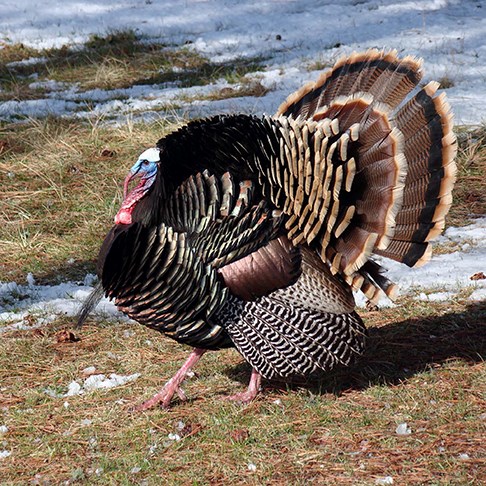
Definitions to Know
Native Species
All organisms that have occurred, now occur, or may occur as a result of natural processes (NPS Management Policies 2006). Each ecosystem has its own unique set of native species, both plant and animal; these are a few exampes:- The wild turkey is (Meleagris gallopavo) native to North America and is the same species as the domestic turkey.
- Mountain pine beetle (Dendroctonus ponderosae) is a native beetle that plays an integral role in forest health and ecosystems. When forests are stressed due to drought and other climatic factors, mountain pine beetles populations can expand exponentially and warrant management.
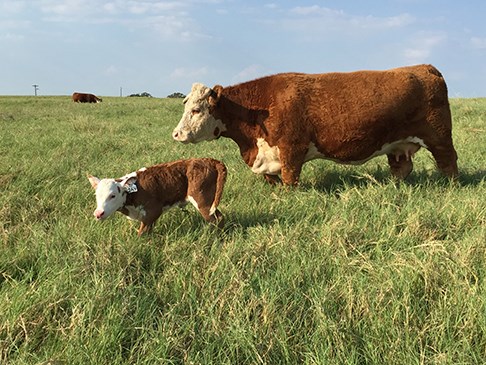
Non-Native Species
Non-native species are plants and animals living in areas where they don't naturally exist. Often they were intentionally introduced by humans, such as livestock or ornamental plants, but they could have been accidentally brought into new areas.- Domestic cows (Bos taurus) were brought to North America as a food source, and continue to be raised for meat and dairy products. Though they are not native to North America, they are considered a beneficial organism in an agricultural setting.
- Bell peppers (Capsicum anuum) and Better Boy tomatoes (Solanum lycopersicum ‘Better Boy’) are examples of non-native plants that are currently not invasive. At present, these species don't pose a threat to native plants and have been cultivated by humans for centuries.
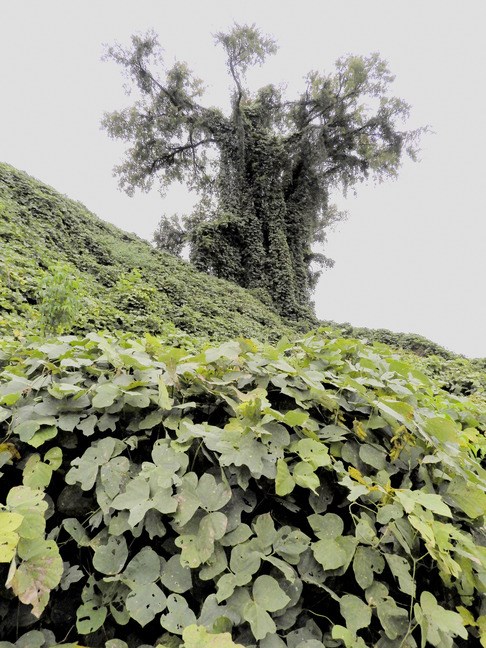
Invasive Species
Invasive species has a specific definition: A non-native species that causes harm to the environment, economy, or human, animal, or plant health (Executive Order 13751). It is often thought that the terms 'invasive' and 'non-native' can be used interchangeably, but this is not always the case.
- The Burmese python (Python bivittatus) is an invasive species in the U.S. This large constrictor snake, which can grow more than 23 ft long, is native to Southeast Asia. However, it can now be found in the Florida Everglades, where. Burmese pythons were being kept as pets, and it is hypothesized that either their owners released them into the wild when they could no longer take care of them, or that they escaped during Hurricane Andrew in 1992. It is illegal to import Burmese pythons into the United States.
- The northern snakehead (Channa argus), another invasive species, is a freshwater fish that is native to eastern Asia but was discovered in the United States in California in 1977 and later in Maryland in 2002. Snakeheads are voracious predators that are able to breathe air, and therefore can survive up to four days without water. Because of this competitive edge, they can easily expand their range and are a threat to other species.
- Kudzu (Pueraria montana) was introduced to the United States in 1876 at the Philadelphia Centennial Exposition. It was promoted as a forage crop, an ornamental plant, and a check on erosion. This species is recognized as highly invasive. It can grow up to a foot a day allowing it to easily outcompete and kill other plants including trees and shrubs. It even grows over power lines and poles causing damage that results in the loss of power to communities.
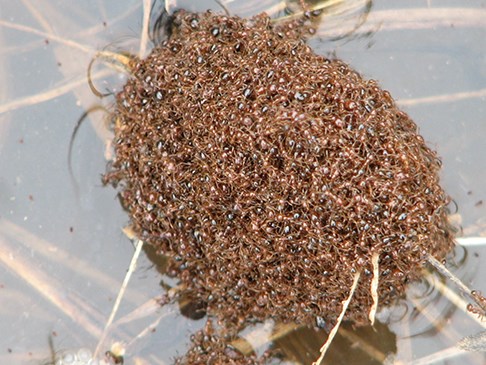
Pest
A pest is any organism that damages infrastructure (e.g., buildings, roads, etc.) or natural or cultural resources (e.g., historic buildings, museums, etc.) or that threatens human health or safety. A pest can be native or non-native, and all invasive species are considered pests.- The white-footed mouse (Peromyscus leucopus) is a native species throughout the United States. When found in nature, the mouse is an integral part of the ecosystem. However, when found in and around structures, the mouse poses significant threats to resources and human health, and it is considered to be a pest.
- Fire ants (Solenopsis spp.) can be both native to some areas of the US and invasive to other areas. When in a setting like a campground, fire ants are considered to be pests, regardless of whether they are native or invasive.
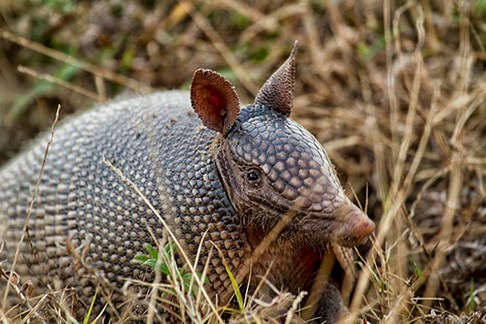
Range-Expanding Species
Organisms whose current ranges are growing or shifting over time are range-expanding species. These changes can happen to both native and non-native species with or without human assistance.
- Nine-banded armadillos used to occur south of the Mexican border. They were not able to expand into the United States due to large rivers, like the Rio Grande, and grasslands acting as barriers to their expansion. As water has been diverted from the Rio Grande, and grasslands have been removed, nine-banded armadillos have expanded into the United States, and can now be found as far north as Missouri and as far east as Florida. For these reasons, the nine-banded armadillo is considered a range expanding species.
- Coyotes (Canis latrans) are native to a large swath of the western and central U.S.; however, their range has expanded east due to the declines in numbers of wolves and mountain lions, reduction in hunting, and reduction in forests across the eastern U.S. They can currently be found in all states, except Hawaii.
Aquatic species live in water, such as fish and shellfish.
Terrestrial species live on land.
Learn more about the correct term usage and the differences between invasive species and non-native species on the What You Can Do page.
Last updated: July 29, 2024
